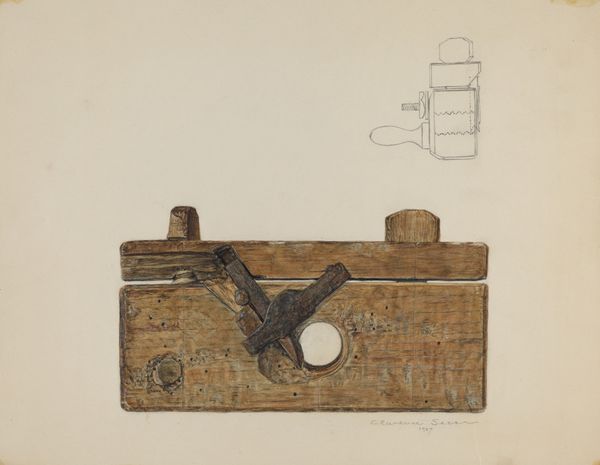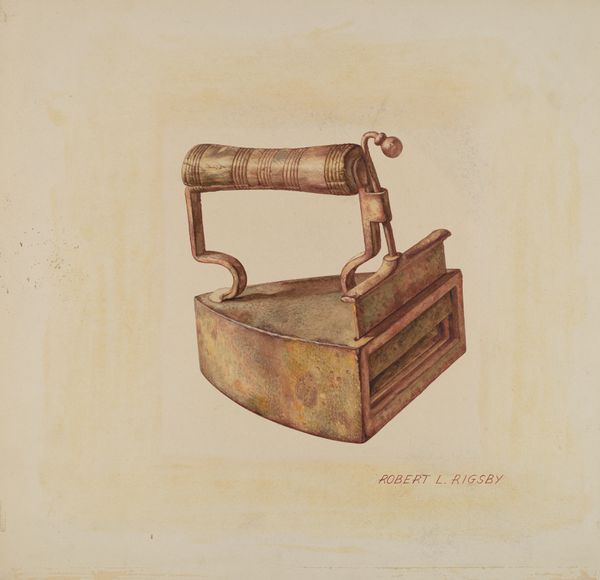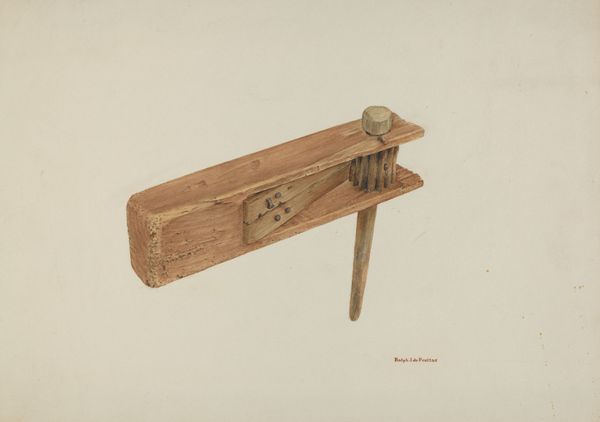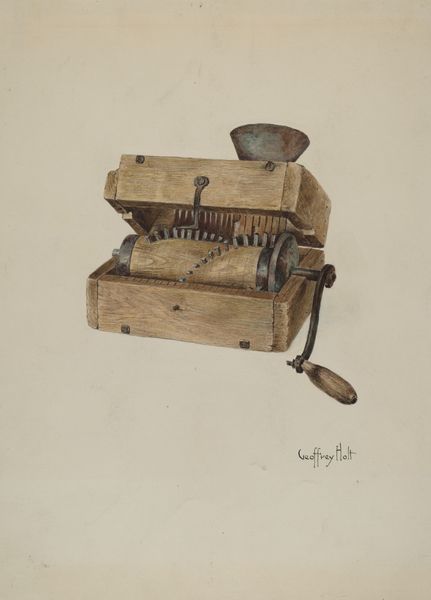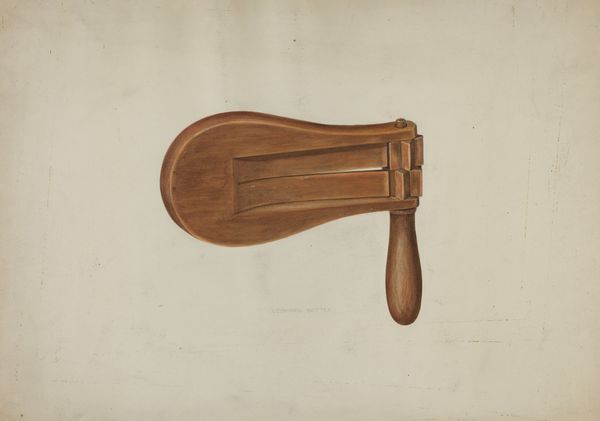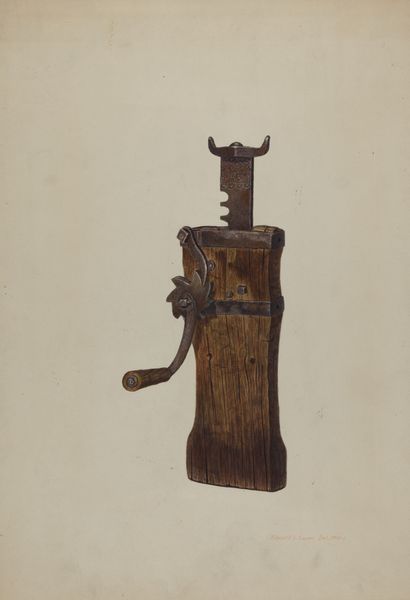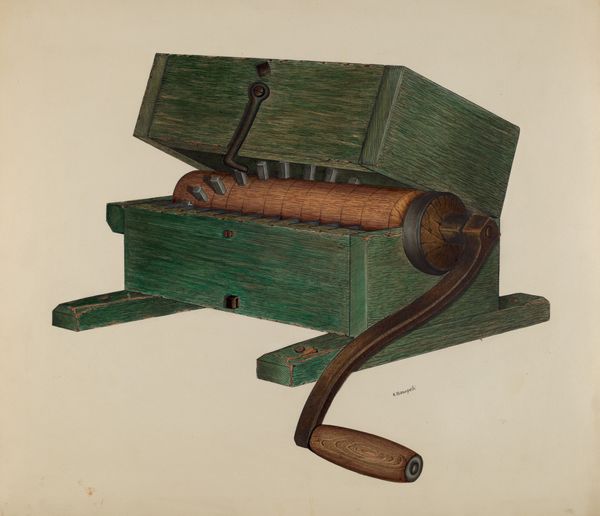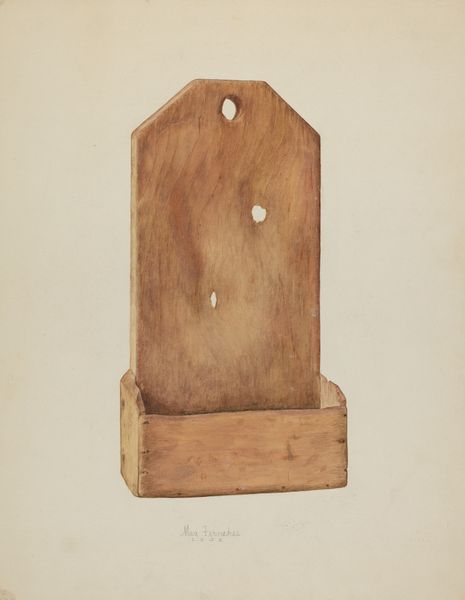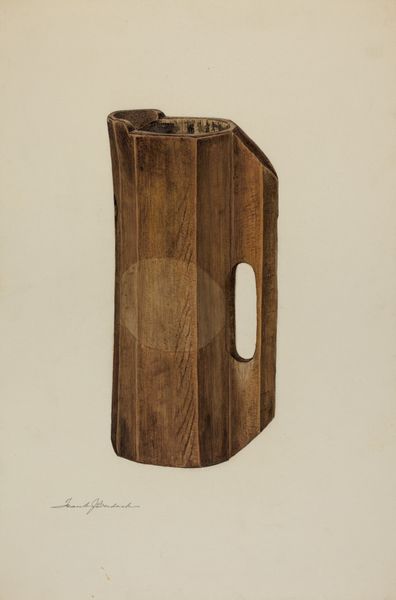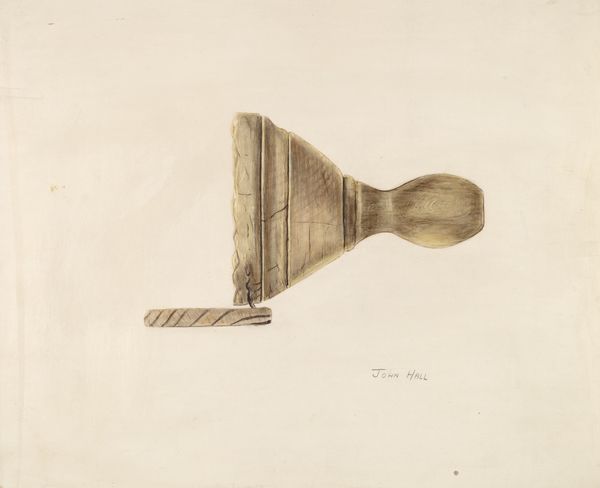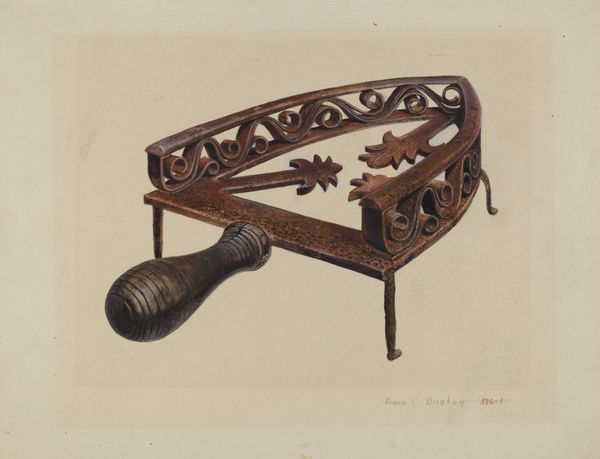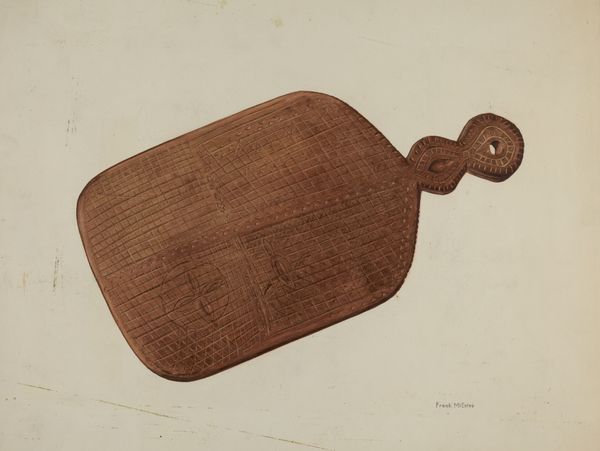
drawing, paper, pencil
#
drawing
#
paper
#
pencil drawing
#
pencil
#
watercolor
#
realism
Dimensions: overall: 26.7 x 35.7 cm (10 1/2 x 14 1/16 in.)
Copyright: National Gallery of Art: CC0 1.0
Curator: Well, isn't this charming? We have here Marius Hansen's "Watchman's Rattle," likely from around 1940, rendered in pencil and watercolor on paper. A beautifully simple image, wouldn't you agree? Editor: My first thought is... stillness. An odd feeling for an object designed for noise! But there's such a quiet dignity to how it's presented. A patient kind of silence. Curator: Indeed. Hansen’s precision captures more than just the object itself; it evokes a bygone era, perhaps a sense of community reliance on sound as a form of signal. Do the colours play into that mood for you? Editor: The restrained palette speaks volumes. The wood tones, rendered so carefully with both pencil and watercolor, ground it in the everyday. The single copper plate hints at something more – resilience, perhaps, the weight of responsibility placed upon simple things. Curator: Exactly. The rattle itself—such an ordinary object—transforms into a potent symbol through Hansen’s skillful hand. The noise-maker becomes almost saintly in its portrayal. Like a quiet call to remember times where these tools were relevant. What's striking is the artist's focus; everything is presented to show form and depth. The image speaks about the importance and function of objects in history. Editor: Thinking about those lost contexts… I wonder about rattles more generally. For me, a rattle is one of the first musical instruments that humanity develops – used across civilizations for dance, ceremony, even in psychological treatments meant to invoke an altered state of consciousness. Is Hansen, knowingly or unknowingly, echoing the ancient and mystical power inherent to instruments? Curator: Now there’s a delicious question to consider! Perhaps we project such deep meanings because Hansen offered the possibility. Whether conscious or not, he certainly understood how to elevate a mundane object to a symbolic one through detailed and affectionate attention. What do you think someone in a hundred years will gather from this particular work? Editor: Perhaps a sense of both intimacy and distance. Intimacy with the artistry, distance from the lost urgency and shared auditory experience. It's like gazing at a beautiful fossil; holding a sonic memory in silent form. A testament, maybe, to the powerful vulnerability of objects in carrying our cultural past.
Comments
No comments
Be the first to comment and join the conversation on the ultimate creative platform.
